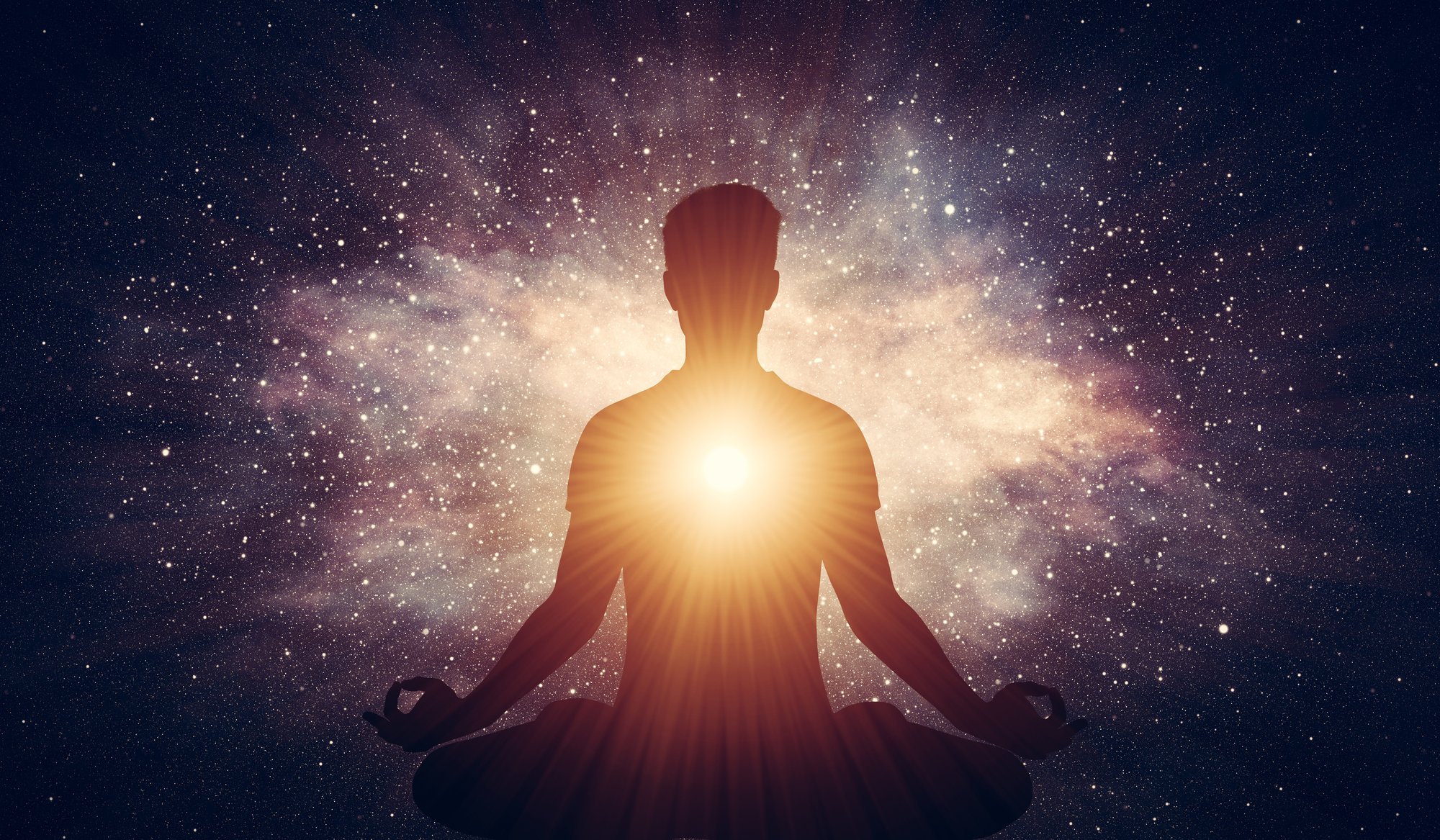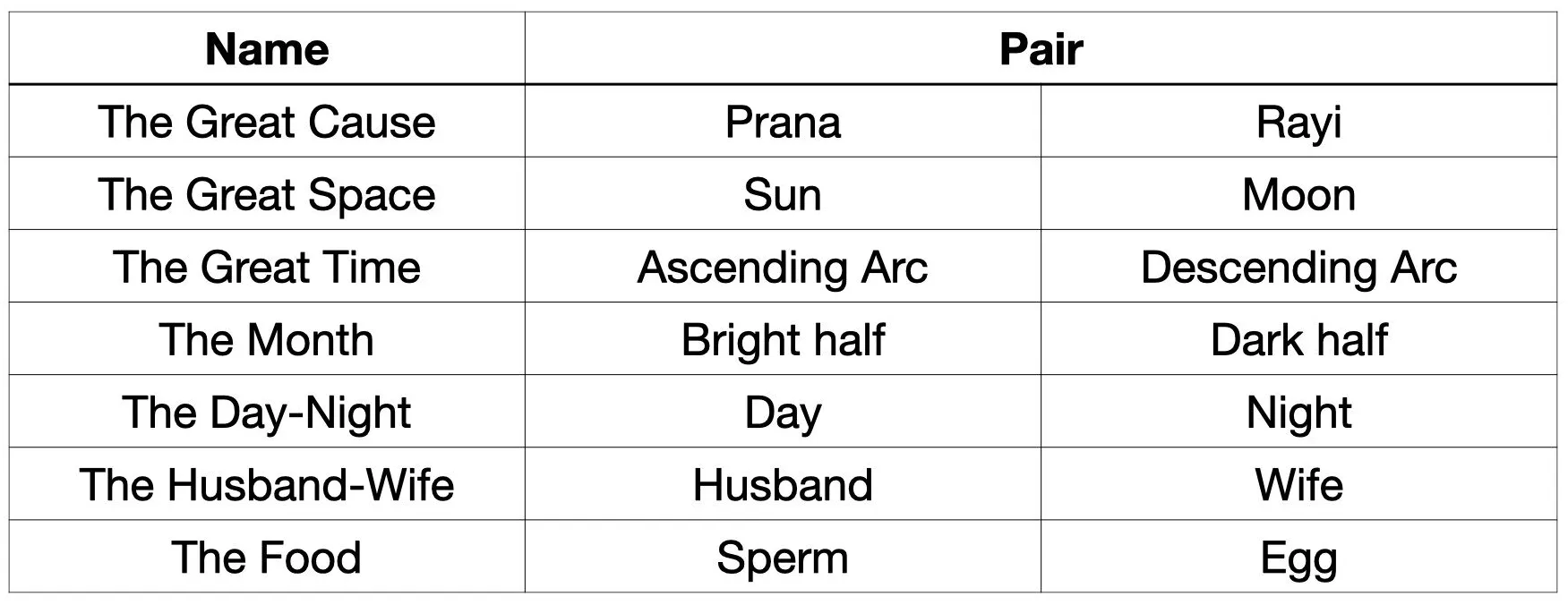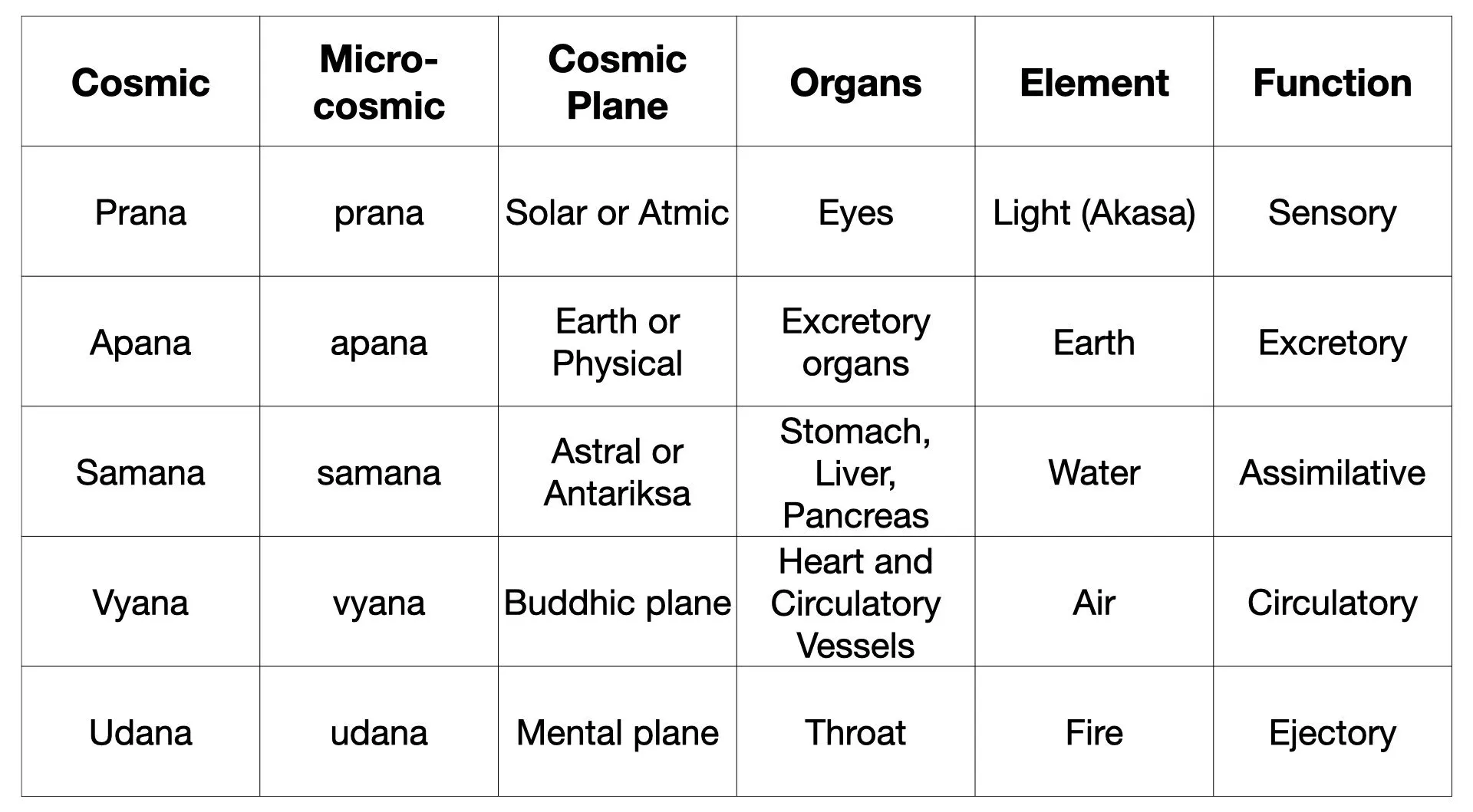The Essence of Prana: Insights from the Prasna Upanishad
By Devendra Narayan, PhD.
In this blog series, I delve into the fascinating topic of Prana. This article summarizes my research on the Prasna Upanishad. I encourage feedback from the yoga community to deepen our understanding and explore ways to incorporate practices that cultivate Prana into our daily lives.

Stock image from DepositPhotos
- The Prasna Upanisad explains the origin and flow of Prana in the body.
- Prana and Rayi are the foundational forces shaping creation.
- Prana resides within the Sun, while Rayi resides in the Moon.
- Prana divides into five upa-pranas, each with specific duties in our bodies.
The word "Prana" has intrigued and fascinated countless individuals on the path of yoga. This universal life force resonates across various cultures and traditions, known as "Chi" or "Qi" in China, the "Holy Spirit" in Judeo-Christian traditions, "rlung" in Tibetan Buddhism, and "Ka" in ancient Egypt. Despite its widespread mention, a profound understanding of Prana remains elusive. In this article, we will embark on a journey to unravel the mysteries surrounding Prana by exploring questions such as:
How Prana came into being?
How does it enter our body?
How does it operate within the body?
What is the most important source of Prana?
How can we harness its power?
When exploring mystical topics, I've found that delving into original scriptures provides the most benefit. By relying on the original writings, misconceptions can be cleared, new insights can be gained, and sincere seekers can be guided on the right path. When it comes to understanding the concept of Prana, I embark on my journey by studying the Upanishads, which are ancient Indian philosophical works dating from 800 to 200 BCE.
Amongst all Upanishads related to Prana, one stands out for providing valuable information on this life force - the Prasna Upanishad [1]. Believed to predate Patanjali's Yoga sutras (c. 200 BCE), it lays the groundwork for understanding the essence of Prana.
"The Prasna Upanishad lays the groundwork for understanding the essence of Prana"
Prasna means "question" and the Prasna Upanishad delves into the significance of Prana through a series of six questions asked by sincere seekers to revered teacher Pippalada."
In this article, we will focus on the first three questions posed in the Upanishad that contain invaluable insights about Prana.
First Prasna
The first question addresses the origin of all living beings. Pippalada reveals that during the act of creation, the Lord meditated and manifested two fundamental entities - Prana (also known as Purusha) representing the spirit and Rayi (also known as Prakriti) representing matter. These two primal forces became the basis for the vast creation. The entire Universe is formed from a dualistic foundation of subtle (Prana) and dense (Rayi) elements. The interplay between these two forces echoes in the arrangement of the seven Creative Logos, symbolizing the intricate order of creation.
Table 1. The seven creative logos. (adapted from [1])

According to Prasna Upanishad, Prana resides within the Sun, while Rayi finds solace in the Moon. This revelation unveils their essential sources - sunlight and moonlight respectively - symbolizing the interplay between spirit and matter.
Similar to how the rising Sun brightens the eastern parts of the Earth, Prana awakens us from deep sleep by illuminating the sensory organs at the front of the body, such as sight. Then, it moves through the right side of the body, including the organs at the back, and proceeds to the left side, covering the upper, lower, and middle sections. Since Sun is the abode of Prana, its rays illuminate every part of the Earth and support all life.

Stock image from DepositPhotos
Second Prasna
Moving on to preservation after creation, which is discussed in the second question of Prasna Upanishad. Here we learn that Prana supports both microcosm and macrocosm; it encompasses everything.
Just as spokes are fixed within a wheel's nave, all things are fixed within Prana. It nurtures fetal growth in a mother's womb and ensures safe arrival into this world. It operates and sustains all organs within our bodies. Additionally, it acts as a primary carrier for offerings to gods and food offered to departed ancestors' souls.
In essence, Prana manifests as the rays of the Sun, the heat in fire, the air in wind, the water in rain, and the gravity in Earth. Ultimately, Prana serves as the protector and giver of life.
“As a mother protects her children, so protect us O Prana. Give it bodily and mental vigor.” Part of Mantra 13, Prasna Upanishad
Third Prasna
The third question delves into deeper mysteries surrounding Prana:
How can such a mighty entity be born?
How does it limit itself voluntarily into a human body?
How does it enter this body?
In what parts of the body does it reside?
How does it uphold the external and internal aspects?
Prana is born from the supreme Lord, initiated by the Great Mind (God). It effortlessly enters our bodies, akin to a shadow cast by a body without distinct effort. The supreme Prana divides itself into five upa-pranas (secondary pranas) and assigns them specific duties within different parts of our bodies. These upa-pranas are prana, apana, samana, vyana, and udana.
“God resides in Prana.” - Prasna Upanishad
Each upa-prana has its own domain of influence. For example, apana vayu resides in the anus and generative organs governing excretion and generation. Prana vayu resides in eyes, ears, nose, and mouth presiding over sight, hearing, taste, and smell - sensory life functions. Samana resides in the navel area assimilating food offered to it while activating seven flames representing sensory openings on our face - two eyes, two ears, two nostrils one mouth.
In the heart lies the jivatma (the self or soul) surrounded by 101 nadis (energy channels), each containing 100 sub-nadis making a total of 10,100 sub-nadis that continue to divide into as many as 72,000 sub-branches. Vyana moves within these subtle channels circulating throughout our bodies it provides vital energy enabling limbs to perform their functions.
Udana moves through susumna nadi - one out of 101 nadis mentioned earlier - leading us upwards after death based on our deeds during life; good deeds lead to realms of goodness while sins lead to lower realms.
Each of the five forms of Prana in the human body is influenced by its cosmic counterpart. Sun blesses ocular prana with its cosmic Pranic energy for sight; Earth regulates excretory-regenerative functions through Apana; space between Sun and Earth helps Samana; atmosphere around Earth supports Vyana; cosmic fire governs Udana. The higher planes of cosmic Prana governs the lower pranas in the microcosm or the body. Also, the five pranas appear to be correlated to the five elements and the five planes.
Table 2. Microcosmic and macrocosmic pranas. (adapted from [1])

According to the Prasna Upanishad, at the time of death when all bodily functions cease, the upa-pranas unite with the subtle body. Udana joined with prana, apana, samana, vyana together with the higher self carries the jiva.
It is the supreme Prana that initiates and ends the cycle of life. He who understands and masters Prana, its origin, the entrance, the localization and five-fold sovereignty, as well as his physiological, physical and celestial aspects attains prosperity, his line never comes to an end, and he himself transcends death.
Note: The reader should take note of two excellent literature surveys on Prana presented by Prof. Kenneth G Zysk of the University of Copenhagen [2, 3]. These surveys specifically focus on literature that predates the Upanishads, which is beyond the scope of this article.
References
[1] BASU B. D. 1911. The sacred books of the Hindus (vol 1). Isa, Kena, Katha, Prasna, Mundaka and Mandukya Upanishads. 145 - 182.
[2] ZYSK, K.G. 1993. The science of respiration and the doctrine of the bodily winds in ancient India. Journal of the American Oriental Society 113, 198-213
[3] ZYSK, K. G. 2007. The bodily winds in ancient India revisited. Journal of the Royal Anthropological Institute S105-S115.
About the Author
Devendra Narayan is a scientist, yoga teacher, breathworker, scholar and founder of Cultivate Prana Academy. Cultivate Prana's mission is to empower modern day healers through education that integrates ancient wisdom and modern science.
Copyright 2024 Cultivate Prana LLC. All rights reserved.

.png)